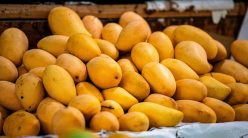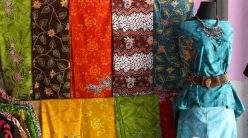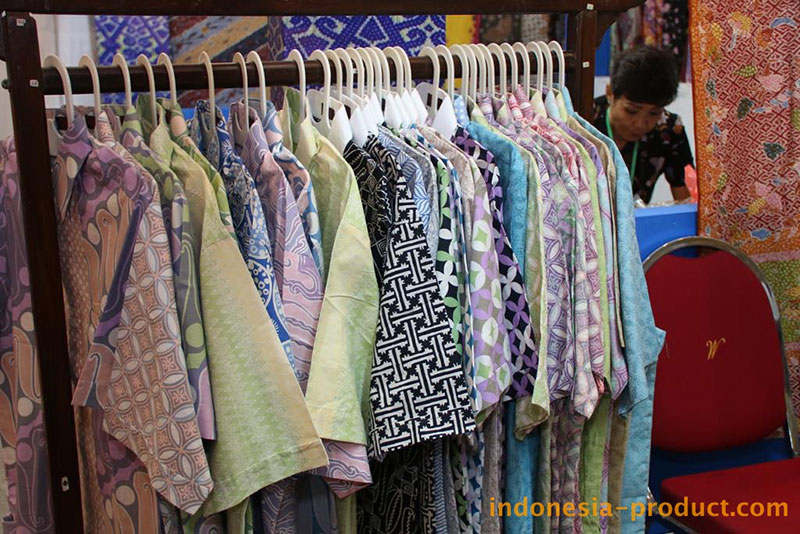With a population of more than 263 million people, Indonesia holds tremendous potential for local startups and foreign enterprises looking to break into the market.
Social media and internet usage rates are rising fast, with one survey recording 143.26 million active internet users in 2017 – a 7.9 percent increase from the previous year. Along with a growing middle-and-affluent-consumer class, the country is dominated by young people who are tech-savvy and eager to spend their money on new products and services.
These results are consistent with the findings of a 2017 study, which showed that Indonesia is now one of the world’s fastest growing mobile commerce markets.
The challenges of diversity
Yet Indonesia also presents unique stumbling blocks for business owners and marketers.
For starters, the country’s archipelagic structure means that 265 million people are scattered across 17,500 islands, each one with different tastes and preferences. This level of diversity means that marketing tactics that work in the capital city of Jakarta, for example, may not necessarily work in another urban center like Surabaya.
In fact, McKinsey & Company found that consumer behavior in Surabaya was more likely to be influenced by branding and image compared to the consumer behavior in Jakarta. Consumers in Surabaya are also reportedly twice as likelythan consumers in Jakarta to seek recommendations from family and friends before making purchase decisions, particularly when it comes to fast-moving consumer goods (FMCG).
One thing for sure is that more Indonesians are going digital. Growth is especially pronounced in the smartphone space, with 47 percent of the total population regularly accessing the Internet on some kind of mobile device.
Of that number, 80 percent use their mobile devices to look for information about products and services.
Top digital marketing platforms in Indonesia
But where exactly do Indonesian buyers go online?
According to Hootsuite’s We Are Social Report for 2018, the most active social media platforms in Indonesia are YouTube, Facebook, WhatsApp, Instagram, and LINE.
We’ll take a look at how businesses are using each social network to reach out to customers.
1. YouTube
According to a 2017 survey commissioned by market research firm Jakpat, 54 percent of Indonesians use YouTube to watch tutorial video content.
Source: eMarketer
These findings are consistent with Google’s research, which found that in Southeast Asian countries like Thailand and Indonesia, being on YouTube has become a social activity that involves shared interests, such as watching makeup tutorials. Google calls these people who spend more than 10 hours a week on the platform “YouTube Enthusiasts”.
Learn from the locals: Among local brands, Tokopedia has the largest audience on YouTube, with over 415 million views as of this writing. The company uses YouTube to publish online classes alongside TV commercials and feature stories about notable ecommerce sellers, among others.
Why does this matter? Those same “YouTube Enthusiasts” are also frequent and high ecommerce spenders. If you’re an online retailer, how-to videos about featured products could be the tool that turns a YouTube Enthusiast into a customer.
2. Facebook
With more than 130 million active users in 2018, Facebook penetration in Indonesia is growing rapidly, up by 23 percent from the previous year. Brands in the FMCG and ecommerce industries take the lion’s share of Facebook engagement.
Of the platforms on this list, Facebook is unique for seeing the most frequent daily use among Indonesians. The platform also serves as a social marketplace and launchpad for buyers in the country, 40 percent of whom use Facebook to look for product information and recommendations.
The latter is especially important, as 31 percent of Indonesian Facebook users make a purchase decision based on recommendations. These reviews generate even more discussions as consumers use Facebook to share about their shopping experience and purchase.
Learn from the locals: Insights from Social Bakers reveal that ecommerce brands like Sale Stock use Facebook to engage millions of social media followers, keeping them abreast of new products, promotions, and other announcements.
The fact that Sale Stock’s leading goods are beauty products just so happens to align with Facebook’s findings, which show 56 percent of Indonesian beauty shoppers look for reviews and 33 percent make more purchases on mobile.
Bottom line? If you’re an online retailer, it would be in your best interest to be active on Facebook, engage users, and encourage reviews.
3. WhatsApp
Hootsuite’s We Are Social report shows that WhatsApp outranks Facebook and Facebook Messenger apps in terms of monthly active users in Indonesia.
Source: Hootsuite
After the instant messaging service released its official WhatsApp Businessapp in January last year, we can expect to see more local businesses using the platform to communicate with customers. In addition, with integration into Facebook and Instagram, social media users can easily send inquiries to companies through WhatsApp, allowing marketers to build a list of high-potential leads.
For now, however, the mobile app is available only on Android and in Indonesia, Italy, Mexico, the United Kingdom, and the United States, geared towards helping smaller businesses in establishing an official presence on the WhatsApp social network. Still, Indonesian companies are already reaping its rewards.
Learn from the locals: In just a year, we’ve seen brands take advantage of this service, with Sale Stock using WhatsApp Business to engage customers and respond to their queries more efficiently, generating inbound traffic to its ecommerce site.
The company did this by using the WhatsApp Business API to engage Indonesian customers at three stages in the customer’s journey:
- Generate awareness by announcing new products and promotions
- Make personalized recommendations to customers based on the products they viewed
- Send notifications (e.g. order confirmation, shipping updates) to customers after they place an order
This proves that WhatsApp isn’t just an instant messaging service; when used effectively, it can be a lead generation as well as a customer acquisition and retention tool.
4. Instagram
Instagram is huge in Indonesia. In fact, it’s the fourth leading country in terms of monthly active users (behind the United States, India, and Brazil).
Insights from parent company Facebook also prove Instagram’s influence on shopping behavior, particularly during the holidays, with 86 percent of holiday consumers in Indonesia using the app for shopping ideas.
Instagram Stories has also taken off in the Indonesian market. Among those surveyed in the country, 62 percent use Stories to browse content, while only 38 percent use the regular Instagram feed.
The reason? Indonesians are drawn to Instagram Stories’ authentic and ephemeral nature, which lets them be “real” in their communications with friends and family.
Learn from the locals: This may explain why Samsung’s Indonesia teamsucceeded in using Instagram Stories to launch the Galaxy A 2017 series and reinforce its position in the mid-range smartphone space. Because mid-range phones are targeted primarily towards younger device users, Samsung Indonesia saw Instagram Stories as the ideal immersive ad platform to appeal to tech-savvy millennials.
The campaign’s creative idea focused on young people using the Samsung A7 as they went about their daily lives, highlighting features such as water resistance and low-light camera performance using texts and emoji stickers. Above all else, the mission was to create video ads that seamlessly fit with the format and appeal of Instagram Stories.
For businesses looking to advertise on Instagram Stories, you need to tailor your content to the platform and the attitudes of the local audience using it instead of forcing things the other way around.
5. LINE
In June this year, Japanese instant messaging app LINE launched LINE Today, a dedicated news platform for the Indonesian market.
In a country where 90 million people actively use the service – placing it next to Taiwan and Thailand as the app’s top three overseas markets – the move was part of LINE’s strategic effort to cultivate brand loyalty and diversify its services.
Source: LINE
Learn from the locals: As the messaging app sets its sights on becoming Indonesia’s number one smart portal, the company is looking to monetize channels like its Line Business Contact service. Currently, local companies such as Go-Jek and Sale Stock are using the service to communicate with LINE users and offer features such as real-time monitoring of motorbike taxi drivers (for Go-Jek) and AR changing rooms (for Sale Stock).
Businesses looking to enter the Indonesian market need to consider LINE’s popularity and growing engagement rates, and look at ways to integrate the messaging app into their lead generation, customer relationship management, and customer retention strategies. They can also tap into LINE Today as a channel for promoting sponsored content through different online publications.
Traditional media still dominant in Indonesia
While digital and social media networks are on the rise in Indonesia, it’s worth noting that TV continues to the be the most dominant platform in the country, with 95 percent of adults actively using it.
In fact, the most popular Indonesian channels on YouTube in terms of total views are the official online extensions of TV news and music stations like RCTI, Indosiar, and Trans TV, among others. PwC predicts that television will continue to be the main advertising medium in Indonesia until 2021, accounting for a 53.8 percent market share in 2017 – up by 0.2 percent from 2016.
With the country having one of the slowest Internet speeds in the Asia-Pacific region (average of 9.73 mbps), overseas companies from developed countries would be advised to reconsider using bandwidth-heavy content, such as 4K video or interactive sites.
Marketing trends to look forward to
If 2018 was the year for ephemeral content (e.g. Instagram Stories, Facebook Messenger Day, and Snapchat Stories) in Indonesia, what can business owners and marketers look forward to in 2019?
We can expect ephemeral content to continue to gain popularity, with more businesses using the format and connecting Instagram or Snapchat Stories directly to their ecommerce sites.
We may also see an upsurge in gamified marketing, what with Hago, a social gaming app, drawing 30 million downloads in Indonesia alone this year. The number of Indonesian mobile game players is also expected to reach 100 million players in 2019 or 2020, presenting an advertising opportunity for local businesses.
WhatsApp and LINE’s continued innovations in instant messaging for the Indonesian market may also point to a greater global trend. According to Hootsuite chief marketing officer Penny Wilson, “The savviest brands will migrate to messaging apps to meet their customers when and where they want to be served.”
Whether it’s TV or the Internet, Indonesia’s consumers expect brands to meet them where they are, in the way they want. Businesses should adjust accordingly, or risk losing potential customers altogether.
The original article published in: https://www.techinasia.com/digital-marketing-channels-indonesia





